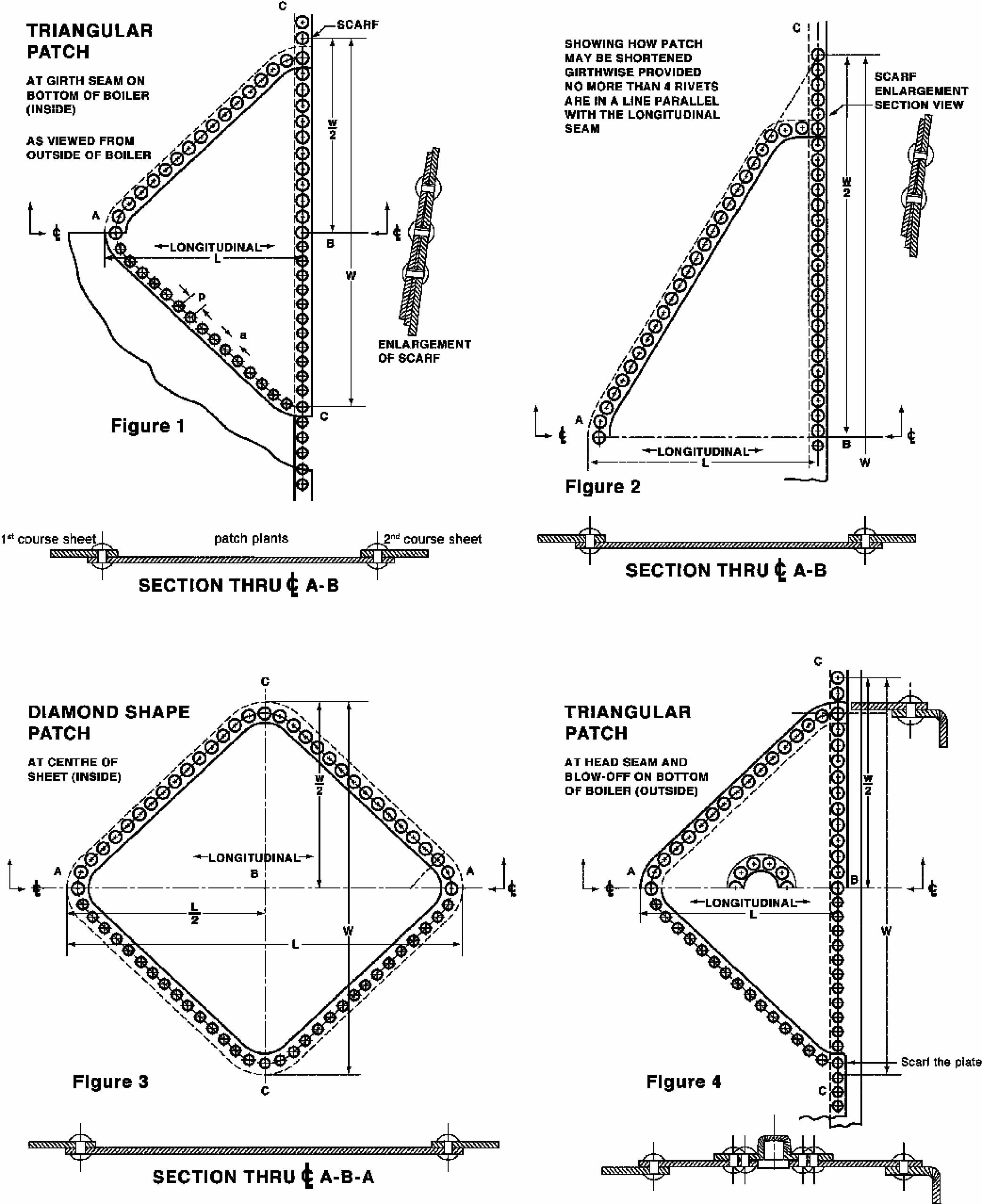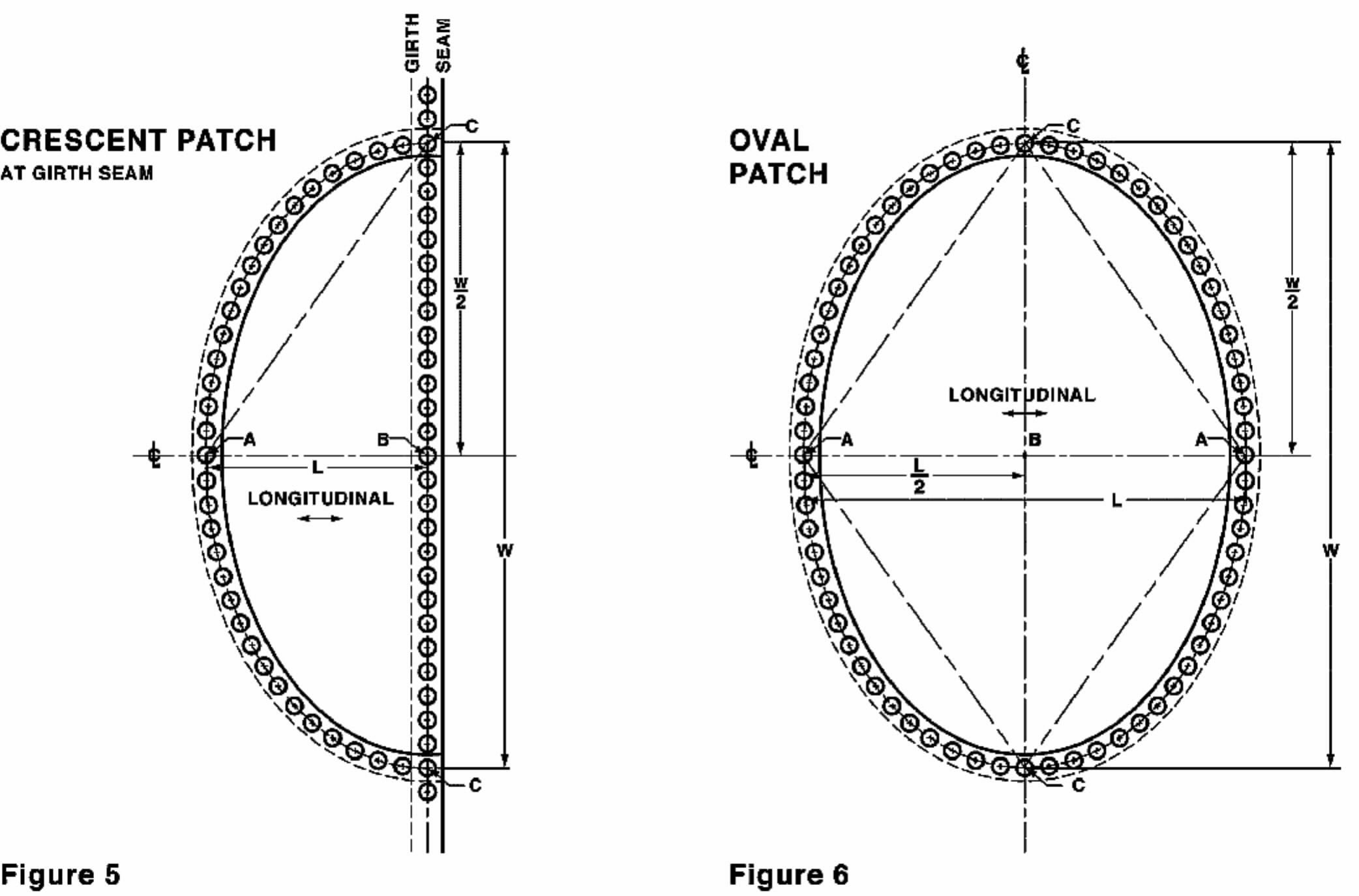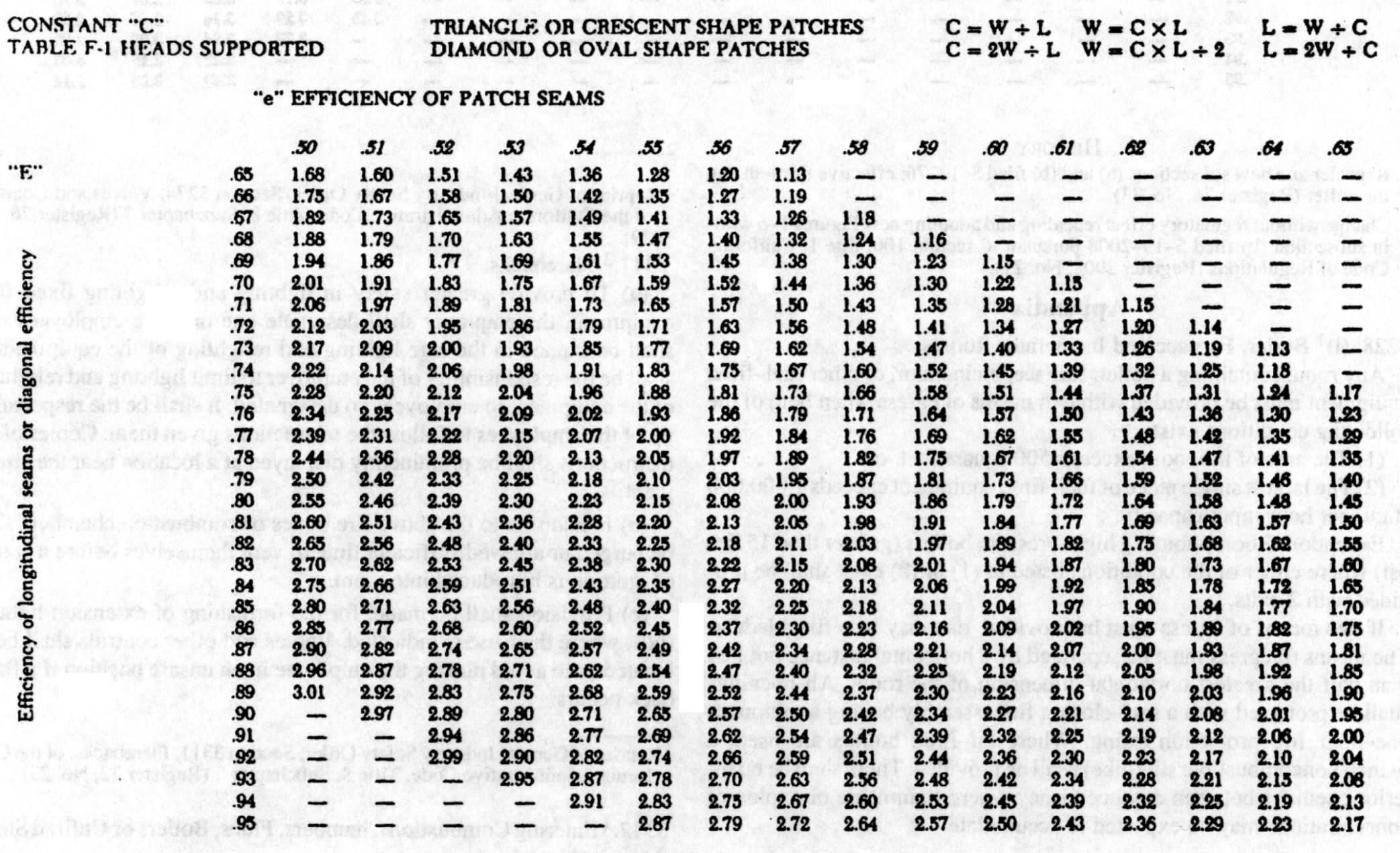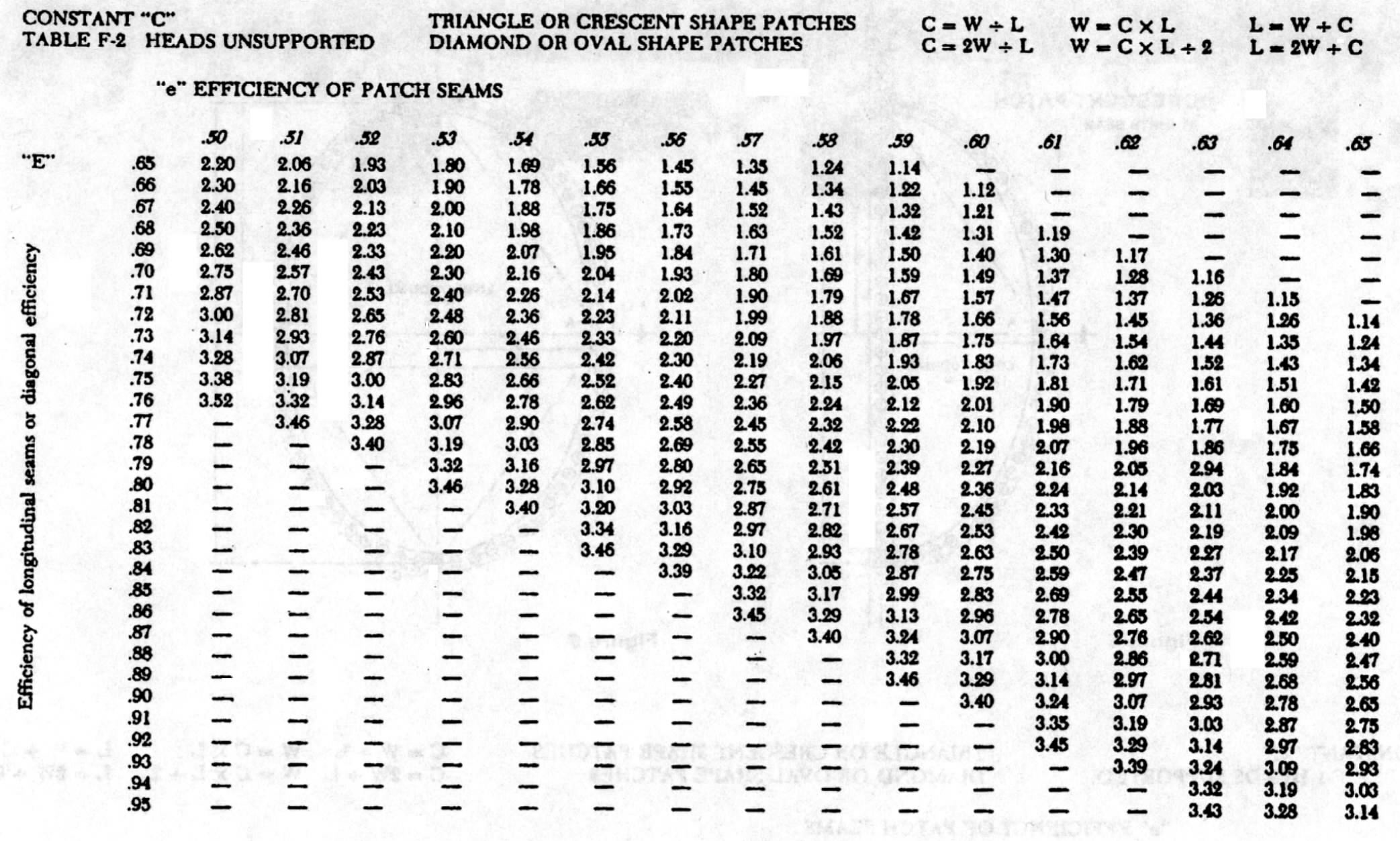 |
California Code of Regulations (Last Updated: August 6, 2014) |
 |
Title 8. Industrial Relations |
 |
Division 1. Department of Industrial Relations |
 |
Chapter 4. Division of Industrial Safety |
 |
Subchapter 2. Boiler and Fired Pressure Vessel Safety Orders |
 |
Article 7. Repairs |
§ 797. Example of the Application and Explanation of Patch Tables and Charts.
Latest version.
- (a) A patch is to be placed in the fire sheet of a horizontal return tubular boiler having a shell plate seven-sixteenths-inch (7/16,) thick, a longitudinal seam efficiency of seventy-four percent (74%), and a length of patch of thirty-six inches (36,). Find the width, W, of patch to be applied so that there will be no reduction in pressure, using a single-riveted seam of normal design.Referring to Table 1, it is found that seven-sixteenths-inch (7/16”) plate with fifteen-sixteenths-inch (15/16”) diameter rivet holes, pitched two and one-fourth (2 1/4) gives a seam efficiency of fifty-six percent (56%).Referring to Table 2, E= 0.74 and e= 0.56 gives a constant C= 1.75; then width W= Lx C = 36x 1.75= sixty-three inches (63”).(b) Pressure Allowed on an Existing Patch.A crescent-shaped patch has already been installed on a horizontal-tubular boiler. It is thirty inches (30”) long and forty-eight inches (48”) wide. The seam is single riveted with thirteen-sixteenths-inch (13/16”) rivet holes pitched one and fifteen-sixteenths inches (1 15/16”). The boiler shell plate is three-eighths-inch (3/8”) thick. The longitudinal seam is of the double-riveted butt-strap type having an efficiency of eighty-two percent (82%). The safety valve is set for one hundred twenty-five pounds (125#) pressure. What maximum pressure should be allowed on the boiler? Reference to Table 1, shows that the normal efficiency of the patch seam is fifty-seven percent (57%). (If the efficiency is not found in the Table, refer to any other available table or determine it in the manner described in paragraphs A-1, A-2 and A-3 of the Appendix of the A.S.M.E. Boiler Code.)Divide the width of the patch, W = forty-eight inches (48”) by the length, L= thirty inches (30”) to find the constant, C= 48/30 = 1.60. Follow down column 0.57 of Table 2 until 1.60 is found. It will be noted that this is somewhere between 1.56 and 1.62 representing E somewhere between 0.72 and 0.73. As the difference between 1.56 and 1.62 is 6, and the difference between 1.56 and 1.60 is 4, Ewill be 0.72 plus 4/6 of 0.01 which is 0.7266.The maximum allowable working pressure varies directly as the seam efficiency. Accordingly, P= (0.7266/0.82) x 125 = 110#. If this pressure allowance interferes with the operation of the plant, the patch shall be replaced by a new one with the proper dimensions giving a diagonal efficiency of eighty-two percent (82%).(c) Design of Patch for Water-tube Boiler.Reference to Table 1 shows that a single-riveted lap seam with seven-sixteenths-inch (7/16”) plate, fifteen-sixteenths-inch (15/16”) diameter rivet holes, and two-and-one-half-inch (2 1/2”) pitch has a normal efficiency of fifty-six percent (56%).Reference to Table 3, shows E= 0.82 and e = 0.56, the constant C is 3.16.Then width W = Cx 1P2.W = 3.16 x 36P2 = 56.88 or practically fifty-seven inches (57”).HISTORY1. Repealer and new subsections (a) and (b) filed 8-12-76; effective thirtieth day thereafter (Register 76, No. 33).2. Change without regulatory effect repealing and adopting new Figures 1-6 within subsection (b) filed 5-19-2008 pursuant to section 100, title 1, California Code of Regulations (Register 2008, No. 21).



